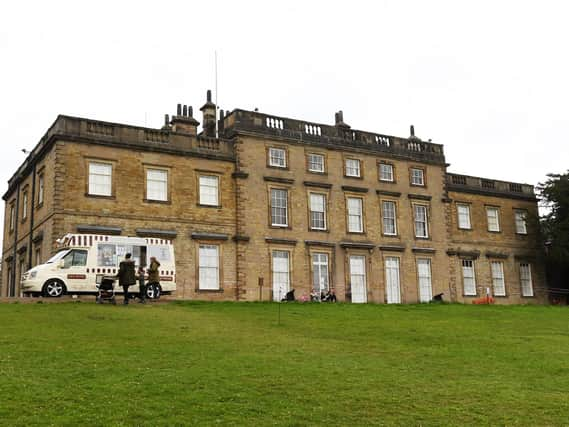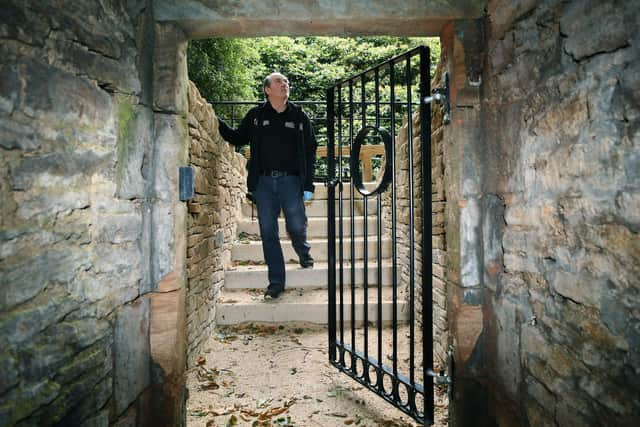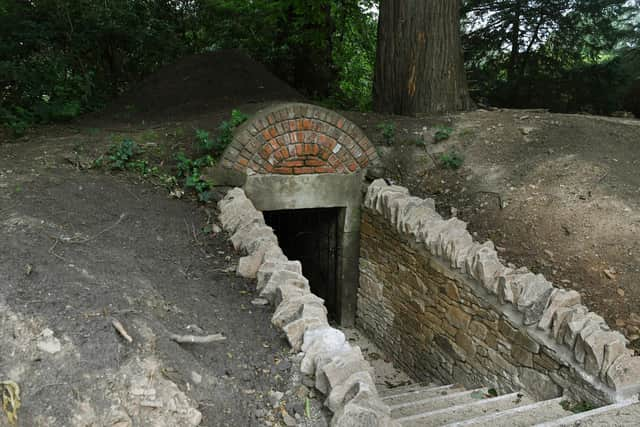Cannon Hall prepares to reveal Georgian ice house for the first time in 60 years


The team at the Barnsley Council-owned museum are putting the finishing touches on the renovation of the Georgian ice house, which had been bricked up and overgrown for 60 years.
Thanks to a £50,000 grant from the Country Houses Foundation, the ice house - which was built in around 1760 and fell out of use when electricity was installed in the hall in 1924 - visitors will now be able to look down into the depths of this fascinating structure.
Advertisement
Hide AdAdvertisement
Hide AdIce houses were a common feature of country estates in the 18th and 19th centuries, when they would be used to store ice taken from ponds nearby. A servant would be tasked with scraping the top layer away to supply the hall's kitchens, where the ice would be used to preserve meat, fish and game in the larder.


When the Cannon Hall estate was broken up and sold in the 1950s and Barnsley Council took ownership of the house, the ice house was cut off from the rest of the grounds and became part of a neighbouring farm. The lane that led to it was blocked off and the entrance was sealed to prevent trespassers falling down the nine-metre drop.
Now, a new path has been constructed leading from the hall's grounds, an elevated viewing area has been created and information boards telling the story of the ice house have been erected.
The ice house and a parallel renovation project - the restoration of the privy midden - were due to be unveiled to the public in May, but the lockdown has put the reveal on hold and a re-opening date for the house and other indoor areas of the site has not been confirmed.
Advertisement
Hide AdAdvertisement
Hide AdThere is likely to be a further delay in access to the ice house because it is such a confined space that does not allow for social distancing.


Bringing the ice house back to life is the culmination of a three-year investment in the hall's grounds funded by a National Lottery Heritage Fund grant, which also includes a rejuvenation of the gardens and the dredging of three ornamental lakes, one of which had silted up to the extent that it could be walked across.
"Before lockdown, we were right at the end of three years' work," said project manager Sharon Sutton.
"We were almost ready - but it's a tight squeeze down there and at the moment we would not be able to open it up with social distancing."
Advertisement
Hide AdAdvertisement
Hide AdSharon believes it could be a century since anyone last stepped inside the ice house until the contractors who have worked on it for the past month arrived.
"We don't know the date that it was originally built - there was a major restoration of the parkland between 1766-94 so we think it would have been around then. We only have anecdotal evidence - a diary entry that refers to a man being paid a shilling to fill the ice house. By 1924, the hall had electricity and the ice house had fallen out of use. The estate was in decline by then. It's almost 100 years since people went inside it.
"When the estate was sold in 1951, there were changes to boundaries and rights of way, the lane leading to it was then owned by a farmer and blocked off. It wasn't touched for 60 years.
"Here at Cannon Hall, we knew it was there, and when we got the £2.9million Lottery grant in 2017 and funding from others as well, we drew up plans to survey it. We found that it was in really good condition, very viable, and decided to solve the landscaping and access issues.
Advertisement
Hide AdAdvertisement
Hide Ad"We've now got a path leading from our own land and steps down to the ice house. It needed minimal work - it's like an igloo surrounding a giant well. The brickwork and shaft is fine.
"Over the years the gardeners had chucked a lot of terracotta plant pots down there, so we cleared them out as well as the overgrown undergrowth. We reinstated the soil cap, which was originally used for insulation."
Ice houses were always situated in woodland, where the trees helped to keep the air temperature cool, and fountains were sometimes placed nearby for the same reason.
"We've put up some interpretation boards to explain what the ice was used for - it wasn't used to make ice cream! It kept the larder cold for meat and poultry."
Advertisement
Hide AdAdvertisement
Hide AdThe concurrent restoration of the privy midden has revived a stone building that was essentially an outdoor toilet, though it was mainly used by the servants to empty bedpans and chamber pots. The sewage was carried straight to the lake.
Staff at Cannon Hall have taken the opportunity to clean and sort the house while visitors have not been allowed inside.
"We've done a lot of painting and cleaning, but since the lockdown was lifted the grounds have been like a Bank Holiday every day, which has slowed things down.
"We don't know when we will be able to re-open the house - it could be in the autumn. We can't do social distancing in the ice house and privy midden, and there are no easy fixes."
Cannon Hall was the home of the Spencer-Stanhope family, who made their fortune from industry, until they sold the estate in the 1950s.
Comment Guidelines
National World encourages reader discussion on our stories. User feedback, insights and back-and-forth exchanges add a rich layer of context to reporting. Please review our Community Guidelines before commenting.